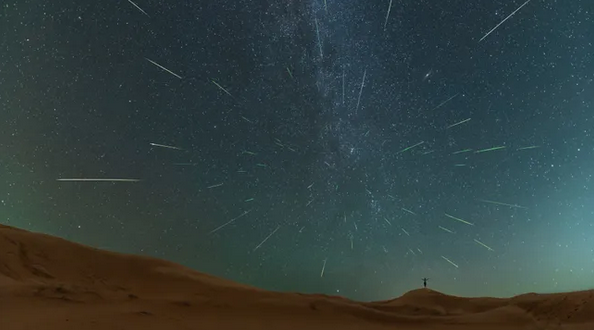Eyes to the skies! A meteor shower should be visible this weekend
August 9th, 2024 by Ric Hanson
DES MOINES, Iowa [KCCI]— One of the greatest celestial shows of the year is nearly upon us — the Perseid (Per’SEE-id) meteor shower! While the Geminid meteor shower typically takes the cake for the greatest meteor display, it’s also during the second week of December which usually means much colder temperatures which can make for less comfortable viewing. The Perseids, which get their name from the constellation they appear to radiate from, Perseus, can bring up to 50-75 meteors per hour and have also produced more long-lived “fireballs.”
The peak of the Perseid meteor shower this year will be the night of Sunday, Aug. 11, into Monday, Aug. 12. The forecast does look like it could include some clouds and even a few showers. With that said, meteor activity has already picked up as the Perseids are a large meteor shower, and viewing will still be good Saturday evening into Sunday and possibly Monday evening into Tuesday as well. You can also watch the Perseid meteor shower online for free this weekend courtesy of astrophysicist Gianluca Masi of the Virtual Telescope Project. The first livestream will begin at 9 p.m. EDT on Aug. 11 (0100 GMT on Aug. 12,) and the second will begin at 9 p.m. EDT on Aug. 12 (0100 GMT on Aug. 13.), weather permitting.
The Perseus constellation will be rising from the northeast Sunday night, which is the location from which the meteors will radiate, but with how large this meteor shower will be, we’ll likely see meteors throughout the night sky. Make sure to keep a broad view so you can pick them out. The moon will set Sunday at 11:22 p.m., making the night sky even darker. If you’re viewing Saturday night or Monday night, moonset will be 10:59 p.m. and 11:51 p.m., respectively.

(Space.Com: The Perseid meteor shower will peak around Aug.11-12, 2024. (Image credit: Photo by Costfoto/NurPhoto via Getty Images))
Under perfect conditions, you may be able to see as many as 50 meteors per hour. Some years have had far more, with up to 150 meteors per hour, but that’s a rare circumstance. Again, this meteor shower has the possibility of shooting an occasional fireball across the sky as well, which is really a sight to see!
Meteors are produced from comet particles and debris from broken asteroids. When comets and asteroids navigate around the Sun, they create a train of dust and debris in their wake. Each year, the Earth rotates through the trail of debris, allowing it to impact the atmosphere and become visible to the naked eye.





